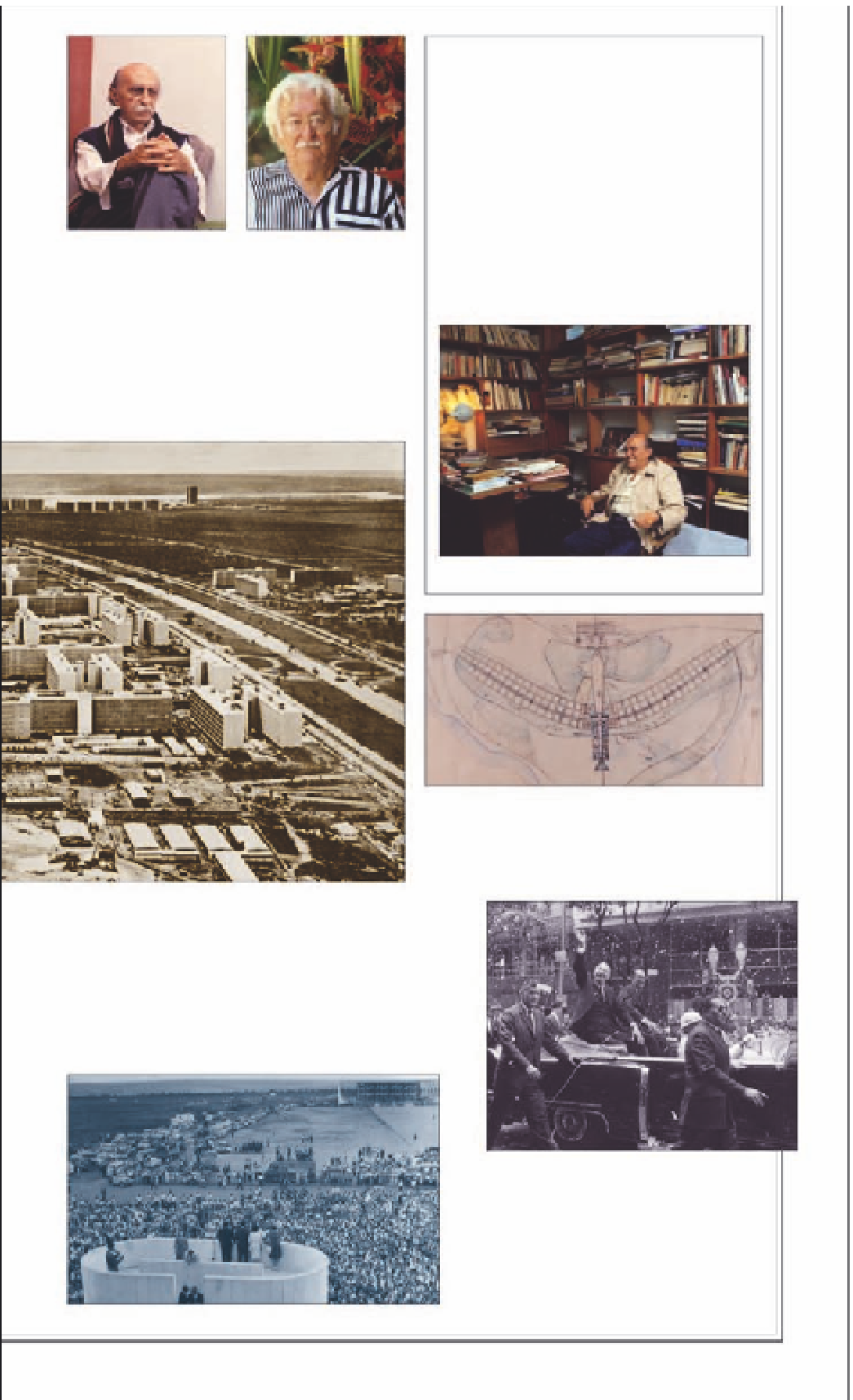Travel Reference
In-Depth Information
OSCAR NIEMEYER
Born in Rio de Janeiro in 1907, Niemeyer
went on to become one of the most
important names in modern architecture.
His first job was with Le Corbusier
and Lúcio Costa on Rio's Ministry of
Education in 1936. After this he went on
to design a series of landmark buildings
such as the Contemporary Museum of Art
in Niterói
(see p89)
. Niemeyer's socialist
beliefs led to his exile under the coup of
1964. He returned to Rio in the 1980s,
where he continues to work.
Lúcio Costa and Roberto Burle Marx
, the urban
planner and landscape designer behind Brasília,
intended that every element, from the layout of
the residential and administrative districts to the
symmetry of the buildings, should be in harmony
with the city's overall design.
Ministerial buildings
were built to
flank Praça dos Três Poderes and
Eixo Monumental
(see pp302-303)
.
Oscar Niemeyer at his office in Rio de Janeiro
Original pen and ink drawings
submitted by
Lúcio Costa in 1956 in the competition for a new
capital city show Brasília's distinctive shape,
which has been variously interpreted as an
airplane, a bird in flight, and a bow and arrow.
Eixo Rodoviária Sul
is
one of the main roads
in the “wings” connect-
ing Brasília from one
end to the other.
American President Dwight D.
Eisenhower
, on an official visit to
Brazil, inaugurated the new
capital city of Brasília with great
fanfare on February 23, 1960.
He also visited Rio de Janeiro
and São Paulo.
The inauguration of Brasília
by President
Juscelino Kubitschek and President
Eisenhower was attended by thousands of
people. The new capital saw the installation
of the three powers of the republic -
parliament, judiciary, and presidency.































